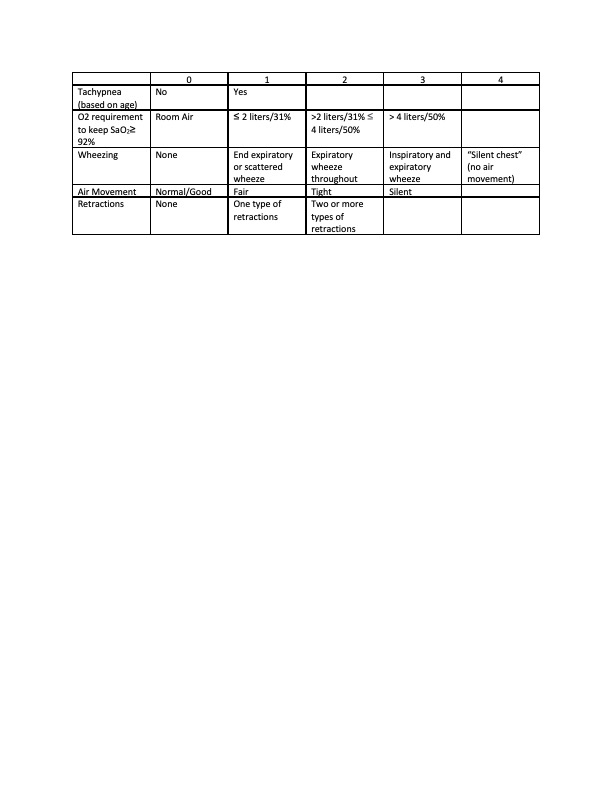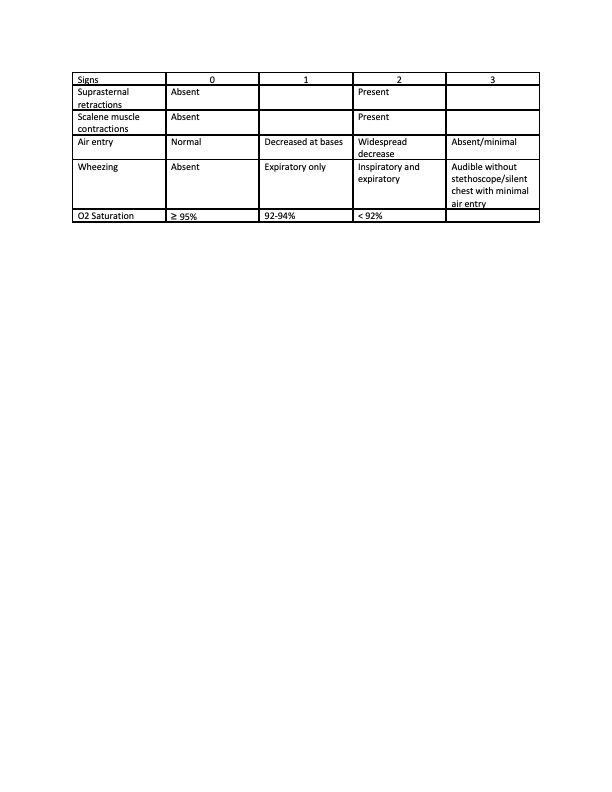Emergency Medicine
Session: Emergency Medicine 9: Respiratory
235 - Performance of Two Asthma Exacerbation Severity Scores in Overweight Pediatric Patients Presenting to the Emergency Department
Monday, May 6, 2024
9:30 AM - 11:30 AM ET
Poster Number: 235
Publication Number: 235.3054
Publication Number: 235.3054

Adjoa A. Andoh, MD
Assistant Professor, Pediatrics, Division of Emergency Medicine
Nationwide Children's Hospital
Westerville, Ohio, United States
Presenting Author(s)
Background: Previous studies have evaluated the ability of clinical asthma scores to assess asthma exacerbation severity and response to treatment in children, however few studies have examined their performance specifically in overweight patients. Body habitus impacts lung function and perceived dyspnea which may influence provider assessment and overall performance of the score.
Objective: The primary objective of this study was to compare the performance of the Asthma Clinical Score (ACS) (Table 1) to the Pediatric Respiratory Assessment Measure (PRAM) (Table 2) in overweight children. Our secondary objectives were to compare interrater reliability (IRR), responsiveness and predictive validity of the ACS and PRAM in overweight children.
Design/Methods: This is a secondary analysis of a single site prospective observational cohort study of children 2 to < 18 years presenting to the emergency department (ED) for acute asthma exacerbations. Children diagnosed with bronchiolitis, co-morbid conditions or chronic lung diseases were excluded. Overweight was defined as >95th percentile sex-specific weight-for-age. Clinicians completed paired assessments of eligible patients using the ACS and PRAM at three points in their ED stay: initial presentation, after completion of first treatment, and ED disposition. Demographic and disposition data was obtained by retrospective chart review. The ACS and PRAM were compared using Spearman’s correlation coefficient. IRR, responsiveness to detect change in clinical status, and predictive validity regarding ED disposition were analyzed using Cohen’s kappa coefficient, Fisher’s exact test, and logistic regression respectively.
Results: 399 children were enrolled, with 102 (25.6%) children classified as overweight. The ACS was strongly associated with the PRAM at all time points (n=356, ρ=0.864, 95% CI=0.81, 0.90) (Figure 1). The ACS showed strong IRR (0.78, 95%CI=0.78-0.78) while the PRAM showed only fair IRR (0.57, 95% CI=0.27-0.87) for overweight children. There was no difference in responsiveness (OR=1.23, 95% CI=0.62, 2.43) or predictive validity between the ACS and the PRAM [(OR =1.70, 95% CI=1.39, 2.14) vs (OR =1.47, 95% CI=1.24, 1.81)] in overweight patients.
Conclusion(s): The ACS performed comparably to PRAM when measured in overweight patients. While both scores showed good responsiveness and predictive validity, the ACS showed better IRR between clinicians for overweight children. The ACS may be a more reliable score in the assessment of asthma exacerbations in overweight children.


.jpg)
